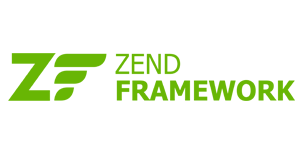-
Notifications
You must be signed in to change notification settings - Fork 100
Zend Framework MVC
Zend framework officially provides two types of skeleton - Zend MVC and Zend Expressive.
No matter which skeleton you are using, this guide might give you some ideas on how to implement Shieldon Firewall, not sure which way is considered the best practice to Zend framework, you just pick one you prefer.
Use PHP Composer:
composer require shieldon/shieldon ^2This will also install dependencies built for Shieldon:
- shieldon/psr-http The PSR-7, 15, 17 Implementation with full documented and well tested.
- shieldon/event-dispatcher The simplest event dispatcher.
- shieldon/web-security The collection of functions about web security.
- shieldon/messenger The collection of modules of sending message to third-party API or service, such as Telegram, Line, RocketChat, Slack, SendGrid, MailGun and more...
I am not sure how old version of Zend framework you are using, therefore I decide to get rid of middleware to make sure this guide will work with the most versions of Zend.
In your public/index.php under this line:
include __DIR__ . '/../vendor/autoload.php';Add the following code:
/*
|--------------------------------------------------------------------------
| Run The Shieldon Firewall
|--------------------------------------------------------------------------
|
| Shieldon Firewall will watch all HTTP requests coming to your website.
|
*/
if (isset($_SERVER['REQUEST_URI'])) {
// This directory must be writable.
$storage = dirname($_SERVER['SCRIPT_FILENAME']) . '/../shieldon_firewall';
$firewall = new \Shieldon\Firewall\Firewall();
$firewall->configure($storage);
$firewall->controlPanel('/firewall/panel');
$response = $firewall->run();
if ($response->getStatusCode() !== 200) {
$httpResolver = new \Shieldon\Firewall\HttpResolver();
$httpResolver($response);
}
}The next step is to create a controller for control panel.
Let's create a controller and named it with FirewallController.
<?php
namespace Application\Controller;
use Zend\Mvc\Controller\AbstractActionController;
class FirewallController extends AbstractActionController
{
/**
* The entry point of the Firewall Panel.
*/
public function panelAction()
{
$panel = new \Shieldon\Firewall\Panel();
$panel->entry();
}
}Open the module.config.php, the location is at:
module/Application/config/module.config.php(3-1) Inside the array ['router']['routes'] add the code as below.
Example:
'firewallpanel' => [
'type' => Segment::class,
'options' => [
'route' => '/firewall/panel[:slug]',
'constraints' => [
'slug' => '[a-zA-Z0-9\/]*',
],
'defaults' => [
'controller' => Controller\FirewallController::class,
'action' => 'panel',
],
],
],(3-2) Inside the array ['controllers']['factories'] add the code as below.
Controller\FirewallController::class => InvokableFactory::class,That's it.
You can access the Firewall Panel by /firewall/panel/, to see the page, go to this URL in your browser.
https://yourwebsite.com/firewall/panelThe default login is shieldon_user and password is shieldon_pass. After logging in the Firewall Panel, the first thing you need to do is to change the login and password.
Shieldon Firewall will start watching your website if it get enabled in Deamon setting section, make sure you have set up the settings correctly.
- Author: Terry L. from Taiwan.
- Website: shieldon.io
- GitHub repository: github.com/terrylinooo/shieldon
- WordPress plugin: wordpress.org/plugins/wp-shieldon/
Docs: Laravel, Symfony, CodeIgniter, CakePHP, Yii, Zend, Slim, Fat-Free, Fuel, PHPixie


